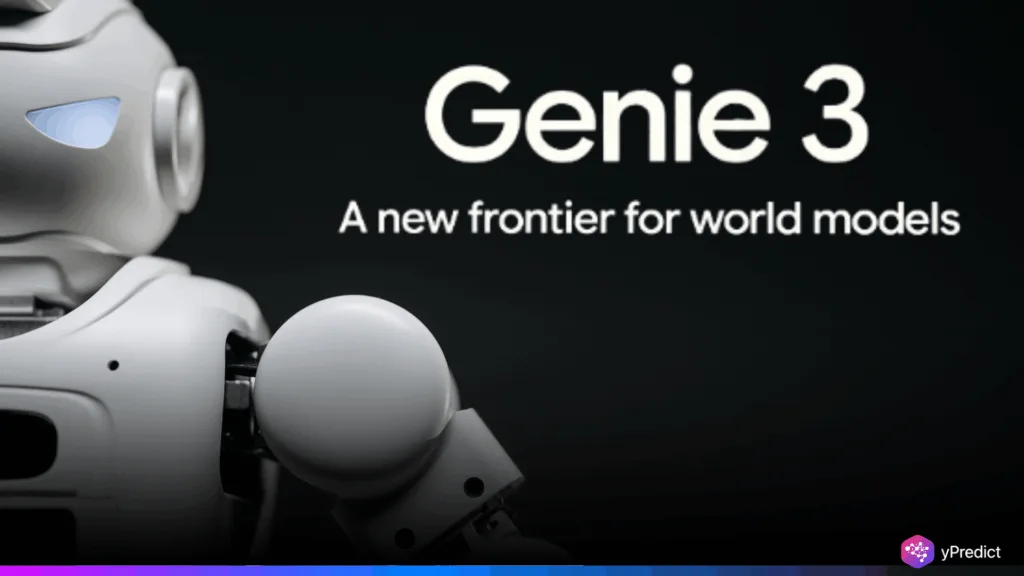
Artificial General Intelligence (AGI) has been a target for the AI community for many years. Reaching AGI will require more than neural nets larger and smarter than we have today and faster processors. Reaching AGI will entail better AI models with advanced AI logic and functions that think, reason and understand the world at a deeper level and reliable AI benchmarks to define and capture our progress. Google DeepMind’s recent announcements have brought that vision closer. With the world model Genie 3, the revised Gemini 2.5 Deep Think, and the launch of the Kaggle Game Arena, the company is tackling two key problems: making AI more powerful and allowing us to test its performance. These projects could change the way researchers and developers think about AGI development for years to come.
The discussion between DeepMind CEO Demis Hassabis and Google’s Logan Kilpatrick gave a glimpse of how these projects could change AI capabilities. The ideas they discussed suggest a future in which AI systems not only solve problems of increasing complexity, but also do so in a manner that emulates human reasoning.
Why Advanced AI Models Are Crucial for AGI Progress
AGI requires AI systems to perform a wide range of tasks with minimal human intervention. This goes beyond task-specific skills and into generalized reasoning. Advanced AI models like Gemini 2.5 Deep Think are designed to bridge that gap.
Gemini 2.5 Deep Think can take in information across multiple modalities, understand context, plan actions over longer timescales, and bring in relevant information from its prior experience. This is a movement towards AI that thinks more like a human being and relies on previous experiences to make better decisions. Although DeepMind is not focused on training AI to answer questions, it wants to train Ai to understand the world to support creative solutions to decision-making.
The additional layer to their world model Genie 3. was the ability to model sophisticated complex real world environments, which permitted the AI the ability to engage in more realistic decision-making and experimenting. Genie’s depth of world modeling is a fundamental teaching in explaining how the world works and enabling the AI to predict and shape where a variety of outcomes can occur in continuous, constantly-changing environments.
The Role of Better AI Benchmarks in Measuring True Progress
While building powerful models is essential, knowing whether they are genuinely improving is just as important. That’s where AI benchmarks come into play. Without accurate benchmarks, progress can be misleading, with models appearing smarter on paper but failing in real-world conditions.
The Kaggle Game Arena aims to fix this. By creating an open platform where AI models compete in complex, interactive tasks, researchers can measure capabilities beyond static datasets. This enables evaluation of reasoning, adaptability, and strategic thinking in environments that better reflect real-world challenges.
These competitions can reveal where a model excels and where it needs improvement. They also promote collaboration between developers and researchers, accelerating innovation across the AI ecosystem.
How Genie 3 and Gemini 2.5 Deep Think Complement Each Other
Although world model Genie 3 , and Gemini 2.5 Deep Think are two different technologies, they have the same goal of developing better and more capable AI. Genie 3 allows for simulated environments where AI can learn, while Gemini 2.5 uses the simulated worlds learned by Genie 3 to develop its own reasoning and decision-making capabilities.
Together they make a feedback loop: Genie 3 creates relatable situations, Gemini 2.5 learns from the situations, and developers take the output to continue the training of both models.
DeepMind’s Vision for the Next Stage of AI
According to the leadership at DeepMind, these are first steps toward AGI. They combine the smarter advanced AI models with better AI benchmarks in hopes of building an AI that learns not just faster, but does so with much more richness of understanding.
DeepMind has a vision of AI that will comprise systems that can transfer skills to use in different domains, navigate unexpected conditions, and help advance both technology and science. Achieving its vision for AI will take continued collaboration and partnership across researchers and policymakers, as well as those in industry.
If these tools deliver on their promise, they have the potential to influence the AI landscape for many decades, and not just embody AGI as a theoretical endpoint but infact to become a practical endpoint.






